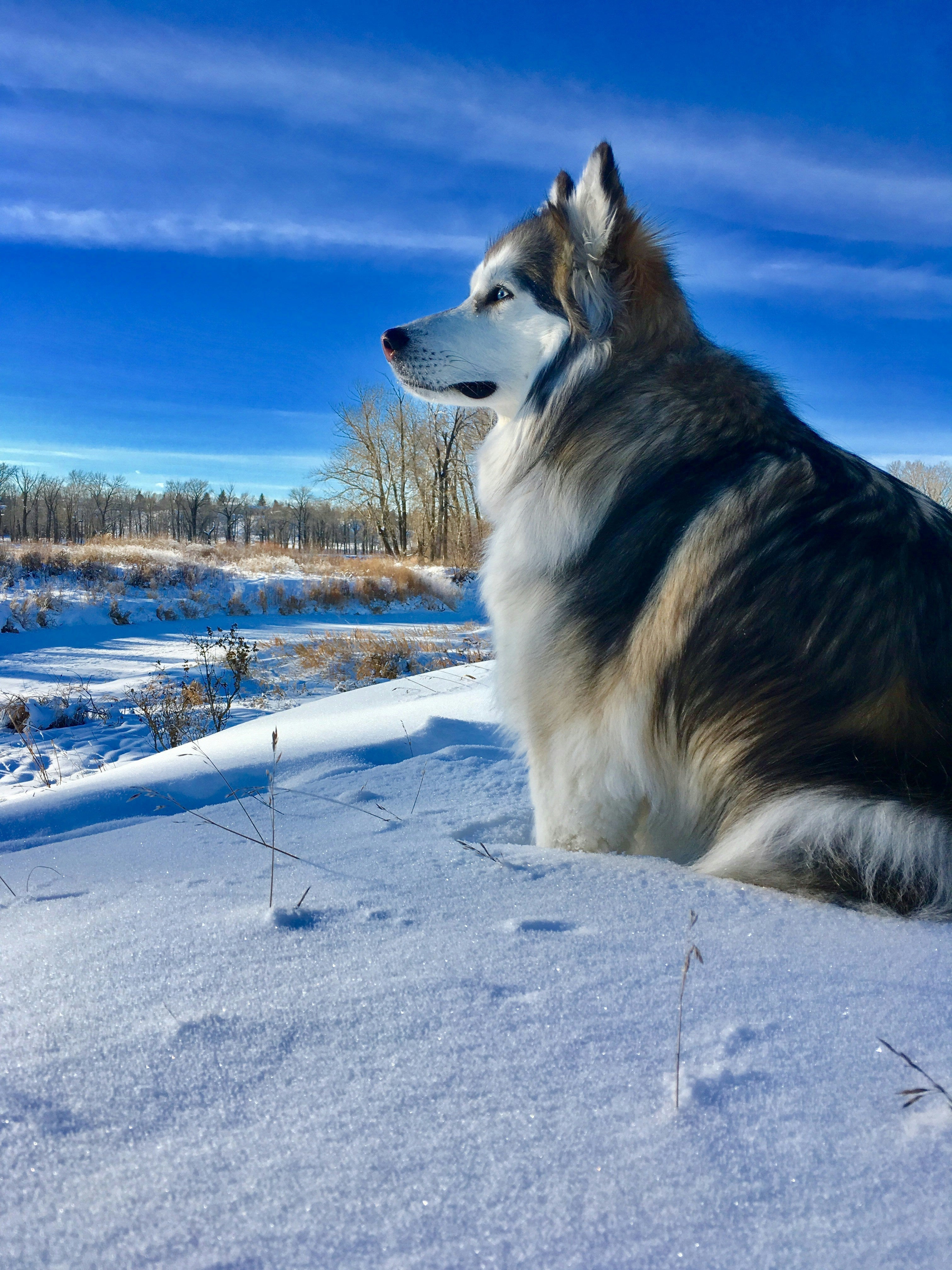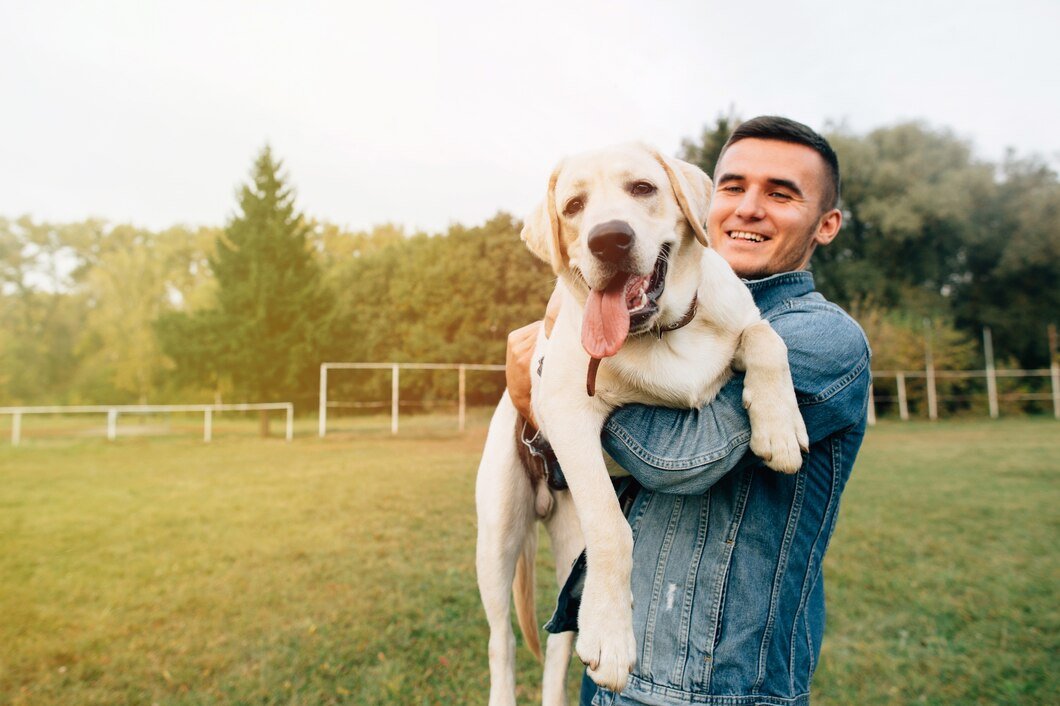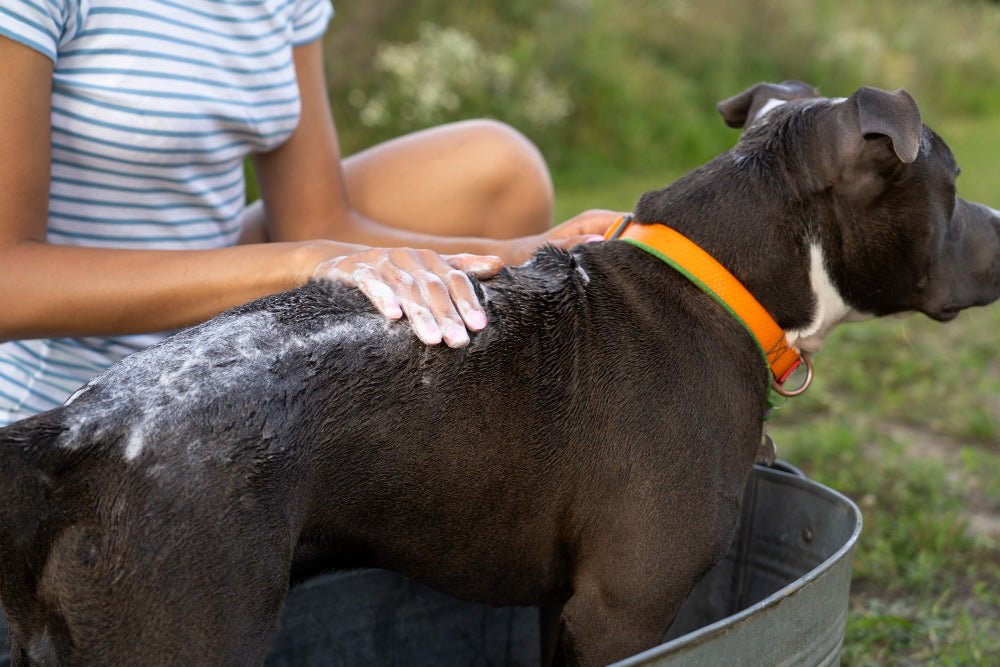Why Do Dogs Shed?
Why do dogs shed? Dog shedding is a completely natural process where dogs lose old or damaged fur to make room for new hair growth. While shedding is normal for most dogs, understanding why it happens can help you identify when shedding might signal an underlying health issue.
If you've ever wondered about this common concern, you're not alone. This natural process is influenced by genetics, hormones, environmental conditions, and overall health. While some shedding is expected in most dog breeds, excessive or abnormal shedding can indicate a medical issue that requires attention.
In this comprehensive guide, we'll explore the science behind dog shedding. You'll learn what causes it and how to keep your dog's coat healthy through proper grooming and nutrition.
The Dog Hair Growth Cycle: Understanding Why Dogs Shed
To understand why do dogs shed, you first need to know about the hair growth cycle. Every hair on your dog's body goes through three distinct phases:
| Growth Phase | Duration | What Happens | Shedding? |
|---|---|---|---|
| Anagen (Growth) | Several months to years | Hair follicles actively produce new cells and hair shaft lengthens | No |
| Catagen (Transition) | 2-3 weeks | Hair growth stops and follicle begins to shrink | No |
| Telogen (Resting) | Several weeks to months | Follicle is dormant; new hair grows beneath old hair | YES - Old hair is pushed out |
Shedding occurs primarily during the telogen (resting) phase when old hair is pushed out by new hair growth. This is why do dogs shed. It's their body's way of replacing old fur with fresh, healthy hair.
Anatomy and Physiology of Dog Hair
The structure of canine hair is a complex arrangement. It consists of the hair follicle, hair shaft, and different layers. Understanding these structures is crucial for comprehending the shedding process in dogs.
Hair Follicle
The hair follicle is a tiny sac located within the skin from which the hair grows. It consists of several components, including the dermal papilla, sebaceous gland, and arrector pili muscle.
The dermal papilla supplies nutrients to the hair follicle. The sebaceous gland produces sebum, an oily substance that moisturizes the hair and skin. The arrector pili muscle, when contracted, causes the hair to stand on end.
Hair Shaft Structure
The hair shaft is the visible part of the hair that extends beyond the skin's surface. It is composed of keratinized cells that form three main layers:
- Cuticle: The outermost layer consisting of overlapping, scale-like cells that provide protection and prevent damage
- Cortex: The middle layer responsible for providing strength, color, and texture to the hair
- Medulla: The innermost layer consisting of loosely arranged cells (may be absent in some hair types)
Why Do Dogs Shed? Common Causes
1. Seasonal Shedding ("Blowing Coat")
Seasonal shedding is one of the most common reasons why dogs shed heavily during spring and fall. This natural process allows dogs to adapt their coat for different seasons.
During the transition from colder to warmer months, dogs shed their thick winter undercoats. This makes way for a lighter, thinner coat suitable for warmer temperatures.
Similarly, as colder months approach, dogs shed their summer coats to grow a thicker, insulating undercoat. Breeds that undergo seasonal shedding include many double-coated breeds, such as Huskies, Malamutes, Golden Retrievers, and German Shepherds.
2. Hormonal Factors
Hormones, particularly estrogen and testosterone, play a significant role in regulating hair growth and shedding in dogs. These hormones influence the hair growth cycle and the synchronization of shedding among hair follicles.
Estrogen: Female dogs experience fluctuations in estrogen levels during different stages of their reproductive cycle. This includes estrus (heat) and pregnancy. These hormonal changes can impact the hair growth cycle and result in shedding patterns.
Testosterone: Male dogs produce testosterone, which affects the hair growth cycle and shedding. Testosterone levels can vary during different stages of a male dog's life, such as puberty and adulthood.
3. Health Conditions That Cause Excessive Shedding
If you're wondering why your dog is shedding excessively, it could signal an underlying health issue. Various medical conditions can contribute to abnormal shedding in dogs:
Nutritional Deficiencies: Inadequate nutrition can negatively impact coat health and lead to excessive shedding. This is particularly true for deficiencies in essential fatty acids, vitamins (such as biotin and zinc), and protein.
Allergies: Dogs can develop allergies to environmental factors (pollen, dust mites), grooming products, or specific food ingredients. Allergic reactions can cause itching, inflammation, and skin irritation, leading to excessive shedding.
It's best to stay informed about what grooming products you are putting on your pet's skin. Many can cause allergy symptoms. For example, formaldehyde is a preservative that may irritate the skin, eyes, nose, and throat even in slow-release formulations.
Hormonal Imbalances: Imbalances in hormones, such as thyroid hormones or adrenal hormones, can disrupt the normal hair growth cycle. This results in abnormal shedding patterns.
Skin Infections: Bacterial or fungal infections of the skin can cause itching, hair loss, and subsequent shedding. These infections may be secondary to underlying allergies or other skin conditions.
Other Medical Conditions: Certain systemic diseases, such as Cushing's disease or hypothyroidism, can affect coat quality and contribute to excessive shedding.
Shedding and Breed Variations
Different dog breeds exhibit variations in hair types. These variations influence shedding patterns and maintenance requirements.
| Coat Type | Shedding Pattern | Example Breeds |
|---|---|---|
| Single-Coated | Minimal year-round shedding; hair grows continuously | Poodles, Maltese, Bichon Frises |
| Double-Coated | Heavy seasonal shedding ("blowing coat") | Huskies, Golden Retrievers, German Shepherds |
| Hairless | Minimal to no shedding | Chinese Crested, Xoloitzcuintli |
Understanding the breed-specific variations in hair types and shedding patterns allows pet owners to tailor grooming practices accordingly. This helps with proper coat maintenance.
Factors Influencing Shedding
Environment and Climate
Environmental factors can influence shedding patterns in dogs. These include temperature, humidity, and light exposure. These factors can trigger or alter the shedding process:
Temperature: Dogs may shed more during temperature transitions. This includes seasonal changes or when transitioning between indoor and outdoor environments. As temperatures rise, dogs may shed their thicker winter coats to adapt to the warmer climate.
Humidity: Humidity levels can impact the skin and coat health of dogs. Low humidity can result in dry skin, leading to increased shedding. On the other hand, high humidity may contribute to the growth of fungi or bacteria on the skin. This can lead to skin infections and subsequent shedding.
Light Exposure: The duration and intensity of daylight can influence shedding patterns in certain breeds. Dogs may shed more during the spring and fall seasons when there are significant changes in daylight duration.
Nutrition and Diet
Proper nutrition and a balanced diet are crucial for maintaining a healthy coat and minimizing shedding in dogs. Essential nutrients, vitamins, and minerals play a vital role. They promote a healthy skin barrier and coat condition:
Protein: Adequate protein intake is essential for healthy hair growth. High-quality protein sources provide the building blocks for strong and healthy hair follicles.
Essential Fatty Acids: Omega-3 and omega-6 fatty acids are essential for maintaining skin health and a glossy coat. They help reduce inflammation, improve skin barrier function, and minimize excessive shedding.
Vitamins and Minerals: Various vitamins and minerals contribute to overall coat health. These include vitamin A, vitamin E, biotin, zinc, and copper. They support healthy hair growth, prevent dryness and flakiness, and help maintain the integrity of the skin.
Water Intake: Sufficient hydration is vital for healthy skin and coat. Adequate water intake helps maintain skin moisture and elasticity. This reduces the risk of dryness and subsequent shedding.
How Natural Shampoos Help Reduce Excessive Dog Shedding
While you can't stop natural shedding, using the right grooming products can significantly reduce excessive shedding caused by poor skin health. Many dogs shed excessively because of dry skin, inflammation, allergies, or buildup. These issues irritate the skin and weaken hair follicles.
PawPurity offers two specialized natural shampoo formulas that target different causes of excessive shedding:
Biogreen Enriched Formula - For Dogs with Itchy, Irritated Skin
Our Biogreen Enriched Formula with 20 Organic Botanicals is specifically designed for dogs whose excessive shedding is caused by itching, scratching, and skin irritation:
Why Biogreen Helps Reduce Shedding:
- Gentle Natural Exfoliants: Remove dead skin cells and buildup that clog follicles and cause hair to shed prematurely
- Soothes Itching Instantly: 20 botanicals calm inflammation and reduce the scratching that pulls out healthy hair
- Premium Plant Oils + Raw Honey: Deeply nourish dry, flaky skin that leads to brittle hair and excessive shedding
- Eliminates Dandruff: Clears flaking that weakens hair follicles and triggers increased shedding
- Balances Natural Oils: Restores the skin barrier to prevent the dryness that causes hair loss
Best for: Dogs with chronic itching, hot spots, allergies, dandruff, or shedding caused by scratching and skin irritation.
Intensive Nourishing Shampoo - For Overall Skin & Coat Health
Our Intensive Nourishing Shampoo with 29 Organic Botanicals provides comprehensive coat care to reduce shedding from poor skin health:
Why Intensive Nourishing Helps Reduce Shedding:
- Rich, Creamy Conditioning Formula: Deeply nourishes skin without stripping natural oils that protect against shedding
- 29 Organic Botanicals: Stop inflammation that weakens hair follicles and triggers excessive shedding
- Promotes Fuller, Healthier Coat Growth: Strengthens hair follicles from the root to reduce breakage and hair loss
- Prevents Dry, Flaky Skin: Maintains moisture balance to keep hair strong and reduce shedding
- 100% Sulfate-Free: No harsh chemicals that damage skin and increase hair loss
Best for: Dogs with general shedding concerns, sensitive skin, dry coat, or those needing overall coat health maintenance.
Which Shampoo is Right for Your Dog?
| Your Dog's Shedding Issue | Recommended Shampoo | Why It Works |
|---|---|---|
| Excessive shedding from itching and scratching | Biogreen Enriched Formula | Exfoliates dead skin, soothes itching, stops scratching that causes hair loss |
| General shedding and dry coat | Intensive Nourishing | Deep conditioning, strengthens follicles, promotes healthy coat growth |
| Hot spots and inflamed skin | Biogreen Enriched Formula | Anti-inflammatory botanicals calm irritation and reduce hair loss |
| Dandruff and flaky skin | Biogreen Enriched Formula | Natural exfoliants remove buildup and balance oils |
| Seasonal shedding and coat maintenance | Intensive Nourishing | Maintains healthy skin barrier and minimizes excessive shedding |
Dog owners report visible reduction in excessive shedding after just a few baths with either formula. Both shampoos work by addressing the root causes of shedding rather than just masking symptoms.
Managing Dog Shedding: Best Practices
While you can't completely stop shedding, you can manage it effectively with proper grooming and care.
Regular Brushing: Brush your dog regularly to remove loose fur before it ends up on your furniture. Double-coated breeds may need daily brushing during shedding season.
Use Quality Grooming Products: Choose a gentle, natural shampoo formulated with organic botanicals. For itchy skin and excessive shedding, try our Biogreen Enriched Formula. For overall coat health, use our Intensive Nourishing Shampoo.
Balanced Diet: Feed a high-quality diet rich in protein and essential fatty acids. This supports coat health from the inside out.
Regular Vet Checkups: If excessive shedding persists after improving diet and grooming, consult your veterinarian. This helps rule out underlying health conditions.
Final Thoughts on Why Dogs Shed
Understanding why do dogs shed helps you differentiate between normal shedding and potential health concerns. By comprehending the anatomical, physiological, and environmental factors that contribute to shedding, you can take appropriate measures to manage it effectively.
Regular grooming with safe, natural products, proper nutrition, and veterinary care can help maintain a healthy coat. This minimizes shedding-related concerns. If excessive shedding or skin issues persist after improving the diet and using a shampoo formulated for healthy skin, visit your vet for a thorough examination.





